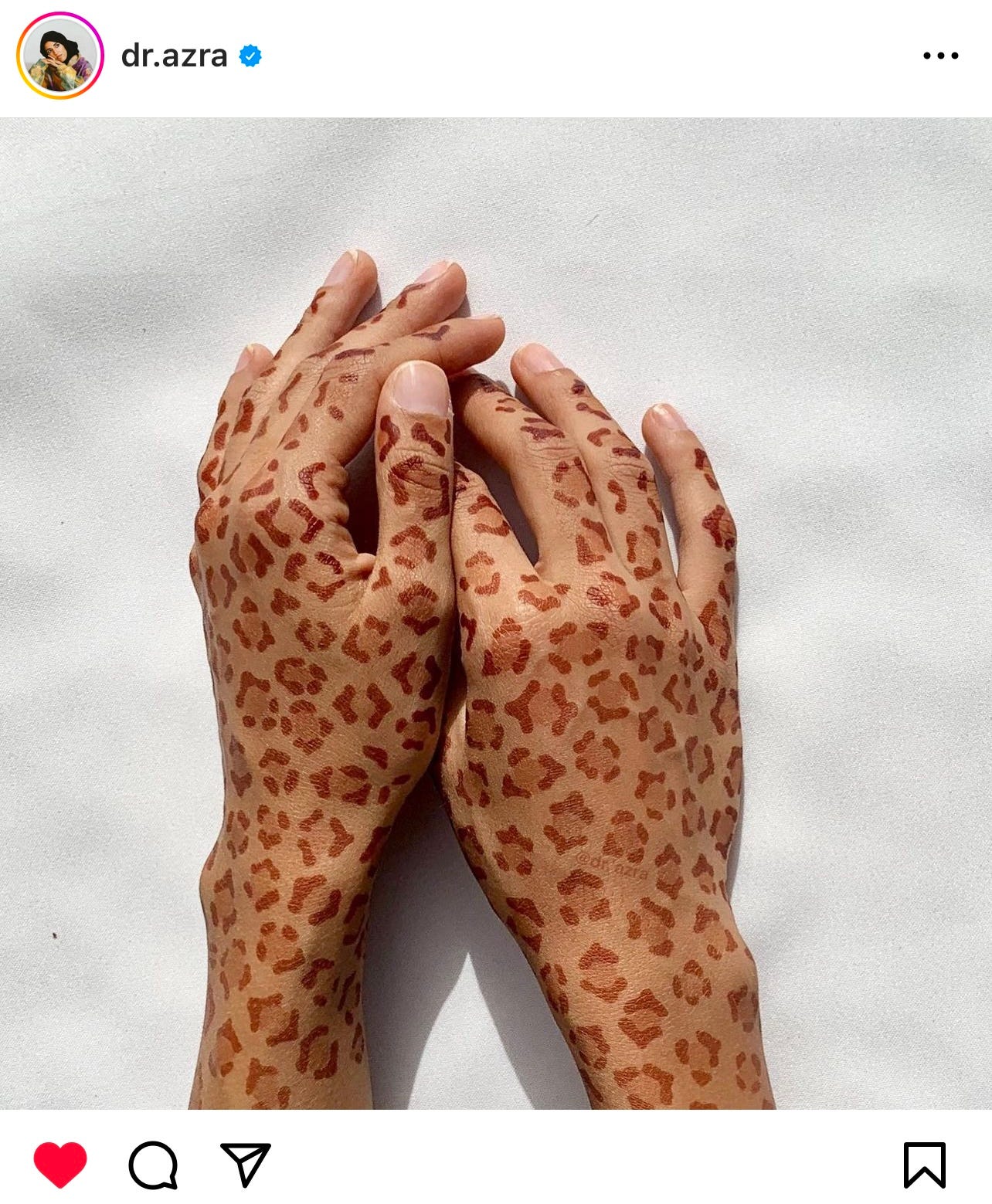The New Generation Of Artists Giving Henna A Modern Twist
Young henna artists are moving away from traditional floral designs, creating art that’s more relevant for day-to-day life
Eid Mubarak! Tomorrow, across the globe billions of Muslims will be celebrating Eid and to mark the celebration, I wanted to share an extract of a recent feature I wrote for Dazed. Henna and Eid, are synonymous with one another, and in especially in my family. It’s a tradition, that just won't shake off and I for one, am very glad. The art of henna is more than just the pretty designs and for many individuals who practice the artwork, its symbolic of their identity, their story and how they move through the world.
There is so much I could say, but now onto the feature, well the extract.
It’s the day before Eid, and a small makeshift henna parlour is taking form in the dining room. The family henna artist, my sister, is in the middle of a circle of stretched arms. Fingers wiggling, arms flapping, it’s chaotic to the unfamiliar eye. But to us, it’s nothing out of the ordinary, a seasoned ritual to bring in the beginning of a celebration, steeped in intricate tales of belonging.
While a common consensus on its origins is yet to be agreed on, some historians report the earliest use of henna as a part of the mummification ritual among the Ancient Egyptians, and by Cleopatra herself to adorn her body. Today, the art form is practised across the globe, from Sudan to India. In its functionality, henna is simple: it’s an act of expression and celebration, done for events like weddings and religious festivities.
There are a few hard and fast rules of henna practice, but for the most part, it’s free-flowing and follows the artistic genius of generations before. The fluidity of henna brings about varying design styles: the henna style of Dubai would be different to that of Pakistan, for example. Each design is a specific exploration of identity and delicate embrace of community, of tales from long before.
Today, the next generation of henna artists are imagining a new world of henna and embracing modern ways of being beyond – but not removed from – its traditional practice. Chiropractor-turned-designer and artist Azra Khamissa is part of this wave. For Khamissa, the premise of henna remains the same, it’s a practice to connect individuals, and it’s in the style where she has been inspired by change. Her bold creations are far from the floral grandeur designs traditionally associated with henna.
It began with a friend’s henna party where Khamissa searched for a design to suit her aesthetic, but couldn’t find anything that felt right. Instead, she ended up drawing inspiration from stripped-back tribal designs, “a traditional circle in the centre and my fingertips,” she says. Since then, her fresh, minimal and deliberate take on henna has started a mini-revolution among henna wearers, and she now has over 160,000 followers on Instagram. People who weren’t fans of the customary feminine floral designs now have a way to reconnect with a part of their identity through traditional practice. “The stripped-back nature of her designs meant I too was able to join in the celebration and feel part of my own community, it suited my style so much more,” Sabira Akhtar tells Dazed.
While these dreamy and contemporary designs offer something new, they don’t take away from what came before. For Khamissa, the use of henna is part of something bigger, it’s a way to highlight, appreciate, respect and revive her culture and traditions. “Some of them are so beautiful but we just need them to be a little more relevant to our day-to-day life. That was it for me with henna,” Khamissa says. This is one of the ways the younger generation of henna artists is putting their modern take on the tradition – henna is no longer just for special occasions.
“I don’t wear henna for only celebratory moments, I wear henna every couple of months. And that’s what I’m hoping to influence people with, henna is not just for Eid or your cousin’s wedding,” Khamissa explains. For years henna was only reserved for big occasions and the loaded, intricate floral patterns, while extremely beautiful, often felt too extravagant for everyday wear. Khamissa’s designs have helped make it more accessible, and relevant, to a new generation of henna wearers.
Read the whole feature here
As always thank you so much reading, and if you haven’t subscribed please do :)





